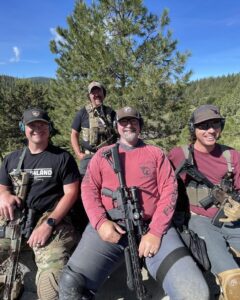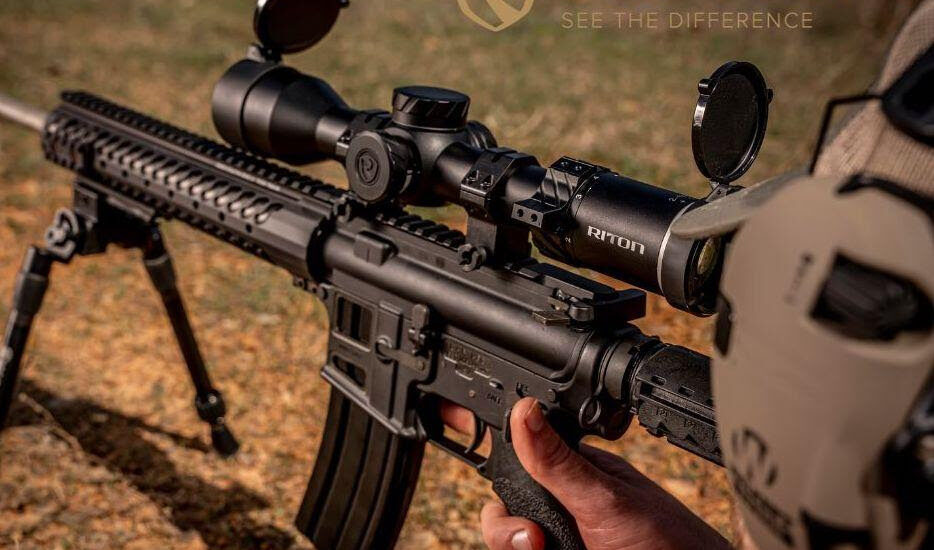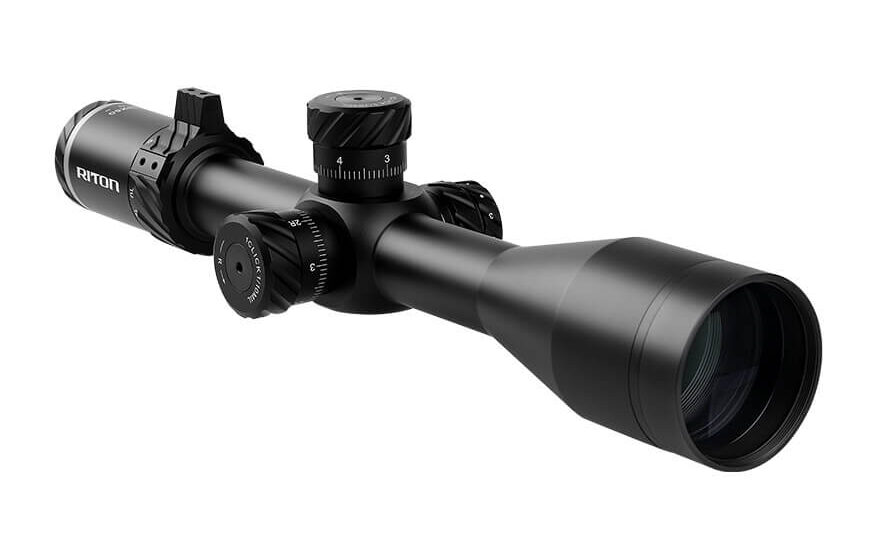“Put anything on your rifle that solves a problem that exists for you” Clint Smith, Thunder Ranch Inc.
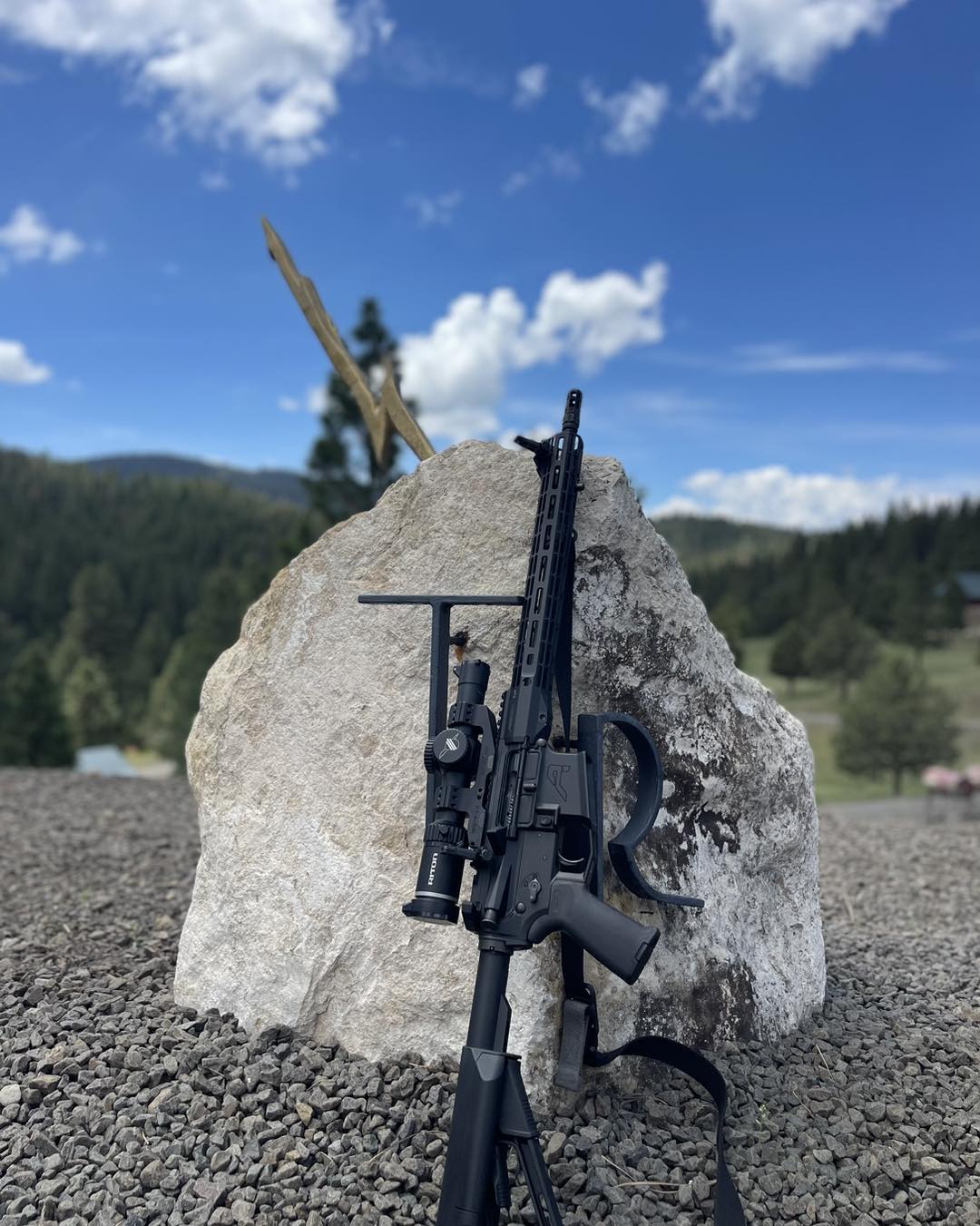
Riton’s 5 TACTIX 1-6×24 Thunder Ranch Optic
I’m new to the Low-Power Variable Optics (LPVO’s) on a rifle. When I got the opportunity to get my hands on Riton’s 5 TACTIX 1-6×24 Thunder Ranch optic I knew I wanted it but I was a bit nervous about doing a review on something I had such little first hand knowledge on.
When the optic arrived, I was impressed with the clear glass and fell in love with the quality mount that I selected for it. I had recently finished a 16” barrel 5.56 build using Aero Precision parts and knew it was the perfect rifle to install this Riton Thunder Ranch edition optic onto. The optic has a 30mm main tube diameter and features capped and zero resettable turrets, 2/10 MRAD windage and elevation adjustment, an integrated and removable throw lever, a fast-focus eyepiece, and 6 levels of green illumination that features a smart on/off setting between each brightness setting. It’s also 100% waterproof, fog proof, shockproof, and has an unlimited Lifetime Warranty with service at the top of the priority list.
I quickly fell in love with this optic while working on a mechanical zero. I (incorrectly and we’ll talk more about this later) zeroed the optic to my rifle at 50 yards. I found the combination of this optic and rifle to be tac driver where I easily shot small groups at 50 yards.
Close quarters with the magnification was a bit of a new experience for me. The bright green dot helped but I initially struggled with both eyes shooting. I broke out my Mantis Blackbeard system and found that it accelerated my learning, and my eyes/brain mapped it out quickly to focus correctly and see images clearly with no magnification and magnified. If you haven’t checked out the Mantis Blackbeard yet, be sure to find some of our recent articles on it – it’s a great system for training with an AR based rifle.
The THR bullet drop compensator reticle (what I found myself calling the green Christmas Tree) worked great for different holds.
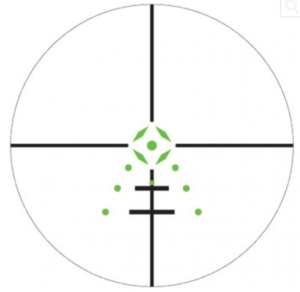
What I really loved about the holds wasn’t just the ability to hold at 200 yards for a hit but the ability to hold at 15 yards for a pinpoint head shot on the target! The height over bore equation for shooting close up is stupid easy by placing the bottom of the green circle where you want to hit at about 20 yards and using the first black line for 5 to 10 yards. Don’t use my data on this though, gather your DOPE (Data On Previous Engagements) for your rifle barrel length, your zero, and your cartridge weight and velocity.
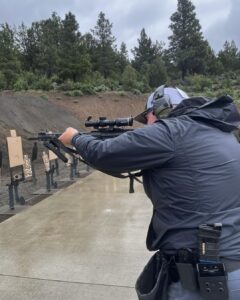
While I enjoyed this rifle, I really hadn’t tapped into it’s potential yet and a great opportunity presented itself – a trip to Thunder Ranch for the Urban Rifle Course.
If you are into AR rifles and you don’t know who Clint Smith is, you have been asleep at the wheel. Clint Smith and Thunder Ranch is in a small town in south Central Oregon. Clint literally wrote the book on fighting with the AR rifle in an urban environment back in about 1983. His Urban Rifle class has been taught for 40 years now, is still relevant, and still being sought out by civilians, instructors, police officers, and military units.
After working at my day job, a couple of buddies and I made the 9-hour drive to Lakeview, Oregon and arrived at our hotel a little after midnight. The doors were locked, and we had to wake up the owner to get inside and settle into our room. The next morning, we eagerly headed out to train with Clint and his crew at Thunder Rach.

The three-day course starts with you seated at the classroom table with Clint. As he goes over the waivers and introductions, he explains the purpose of the course and why you might want to listen to him. You may have heard the range rules and safety rules 1,000 times or more but hearing them from Clint is an all-new experience! An emphasis is immediately placed on creating a stable but mobile firing platform, loading the rifle, maintaining a continuity of fire, keeping your eyes up but your head down, clearing stoppages, manipulation of equipment, and getting hits on the target while being ready to get more hits on the target if needed.
After the classroom time we made the trip up the hill and went to work training on the range.
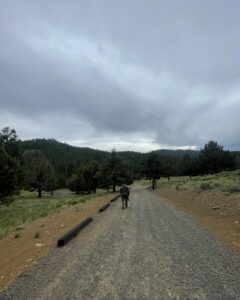
Clint and his staff set the tempo and pace right away and learning continued.
It was quickly evident that some students didn’t have the best of quality rifles or the best of quality optics. Equipment started to fail right away for some. The Riton 5 TACTIX 1-6×24 worked without flaw and my confidence in the optic and my ability to use it increased throughout the 3 days of training and the 1,000 rounds fired.
Part of the first part of the live fire was confirmation of zero. I quickly realized my error in the 50 yard zero that I had done. While there are arguments to be made for different distance zeros, I didn’t really think any of those arguments were relevant to my situation. This optic is designed for a 100 yard zero and I was literally training with the man that was consulted with for the development of this optic. When in Rome do as the Romans do, when at Thunder Ranch do as Clint Smith tells you to do! The 5 TACTIX is made for a 100 yard zero!
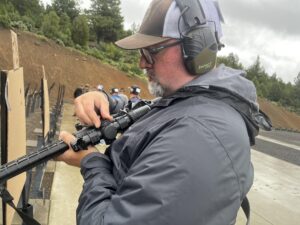
With the 100 yard zero, it has known holds for 100, 200, 300, 25, 400 and 500 yards, including crosswinds of 10 mph at distance, this optic allows for quick and accurate decision-making. The first focal plane (FFP = stays the same size as the target) reticle is illuminated and provides a field of view at 100 yards of 111.2ft down to 18.33ft with it’s 1-6 magnification. You can fine tune your zero with the ¼ MOA adjustments (.50 inches at 100 yards). No tools are required to make your adjustments in the field. Take the covers off, make your adjustments with the easy to read and easy to feel clicks and you are good to go.
To activate the illumination of the reticle, you pull out and rotate the adjustment knob in either direction. The smart adjustment has off positions between each brightness setting, letting you turn the optic off and back on again at the brightness setting that you’ve planned for. Changing the battery is a snap by unscrewing the outer cap that is located with the illumination knob. The optic takes a CR2032 battery.
Adjusting your focus and your zoom is fast and easy. To adjust the reticle focus you power up the magnification to max, aim it at a blank white wall or even white paper and turn the eyepiece in or out until the reticle image is as crisp as possible for your old eyes. Kind of like going to the eye doctor, lens 1 or lens 2? Lens 3 or lens 2? You’ll figure it out. The removable throw lever makes it easy to grab and zoom in and zoom out quickly.
Once you have everything as crisp as possible and mounted correctly to your rifle, find your zero shooting as tight of a group as possible and set the zero reset turrets after you’re all done sighting it in.
When zeroing, you can use the 25-yard point of impact reticle to start the process. Shoot a tight group, make adjustments and confirm. Now take it out to 100 yards and repeat for an accurate 100-yard zero and to tap into the settings of the THR reticle.
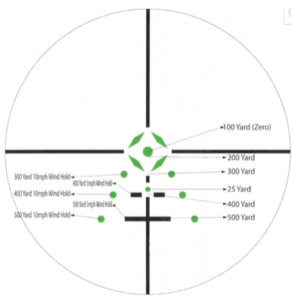
The Urban Rifle class at Thunder Ranch was a bucket list item for me and well worth the expenditure, don’t forget to plan for the price of the frangible ammunition. If you get a chance to go – do it. Learning from Clint himself was pretty great, his team that he has assembled are wonderful as well. The facility is well thought out and they utilize every square inch of the range that is used. The setting is beautiful but the weather can be interesting in the high dessert mountains. Bring some layers with you and be ready for hot, cold, wet, dry, or even snow – maybe all in the same day! Oh, and bring some knee pads. The rock on this range isn’t very forgiving. The Riton optic worked flawlessly in the varying weather conditions of sideways rain to heat to cold.
